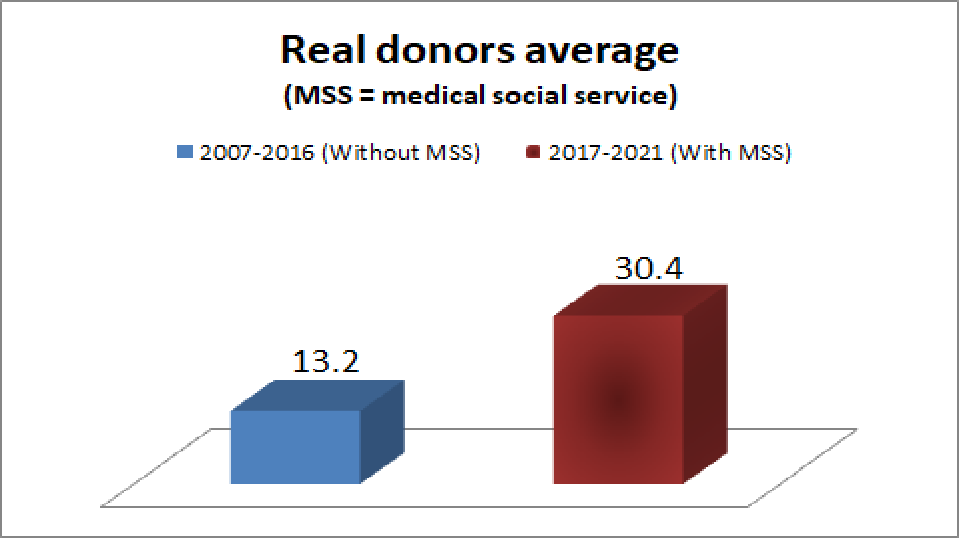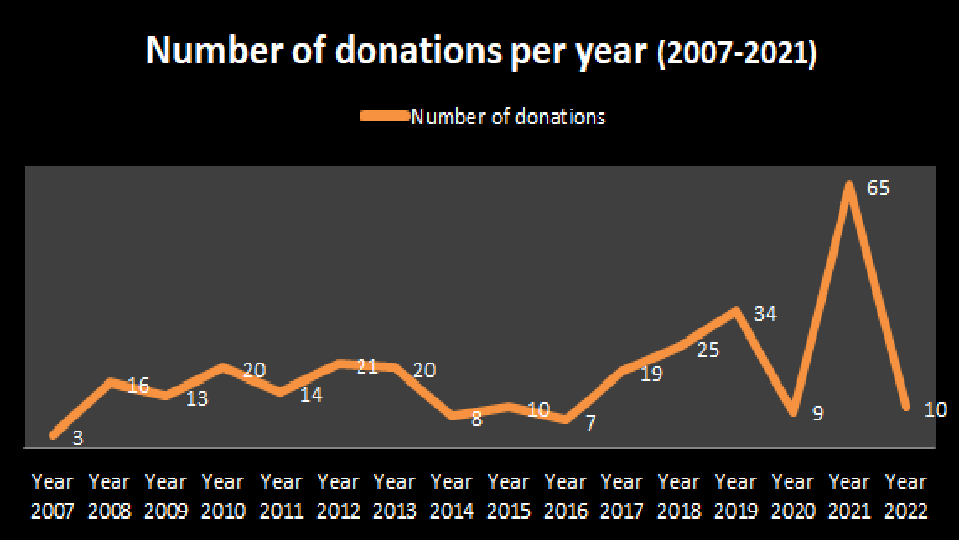A model for increasing organ and tissue donation: the social service in medicine
Ernesto Duarte-Tagles3,4, Martha Susana Pérez-Cornejo1,2,4, Luis Carlos Rodríguez-Sancho4.
1Organ Donation Coordination, Hospital General del Estado "Dr. Ernesto Ramos Bours", Hermosillo, , Mexico; 2Organ Donation Coordination, Hospital CIMA Hermosillo, Hermosillo, , Mexico; 3Solid Organ Transplant , Hospital General del Estado "Dr. Ernesto Ramos Bours", Hermosillo, , Mexico; 4Liver Transplant program, Hospital CIMA Hermosillo, Hermosillo, , Mexico
Introduction: In Mexico organ donation rate is one of the lowest in latinamerican countries. Before COVID-19, deceased organ donor rate was 3.8 p.m.p. (2019) and for 2020, decreased to 1.2 p.m.p. This represent a major problem since waiting lists still growing; by march 2022 a total of 22,797 persons awaiting for any kind of transplant. Disparity between people waiting for a transaplant and real donors makes urgent to have programs that increase donation. In Mexico there is not an adecuate organization to procure organs (like UNOS), enough resources and personal dedicated to it, therefore most of the times, every hospital organize its own procurement team. Because of this, few hospital can have a dedicated and payed transplant coordinator available all time. In Sonora state, to have personal that can aid in this labor, trained medical students in their last year , whom are dedicated to social service according to our law. Mexico’s medical social service program, consists in last year students of med school attend a health center for medical consultation. The last 10 years there has been a variation in this program and students attend urban, research centers and universities, so they develop health programs to the community. We proposed students from medical social service to get involved in organ donations programs, within a hospital, so can develop skills and knowledge about the field as well as detecting potential donors that become real donors 24/7.
Methods: We create an educational program along with four universities that include lectures about organ donation in several fields: conferences about legal framework, detecting a potential donors in hospitals, characterization of donors for tissue as well as solid organs, how to talk to the family about organ donation and all the process of it. At same time they spend time in the organ donation coordination office and divide hours during day and nights so detect potential donors.
Results: From 2007 to 2016 we had an overall donation rate of 13.2 donors per year. From 2017, our program of medical social service started and in half of the time we duplicate donation rate to 30.4 donors per year, being 2021 with highest donors (total of 65).


Conclusion: Pandemic reduced dramatically organ donation worldwide, and while some countries are doing better, still much work to do. Having young doctors doing medical social service in organ donation coordinations demonstrate can be a good, safe and low cost programs that allow increase organ donation rates significatively. In our hospital we end 2021 with a deceased organ donor rate of 17.2 donors p.m.p., much higher than national media of 1.2. We believe this kind of programs, making feasible to every region of latinamerican countries that have medical social service can help to increase organ donation and transplantation.
